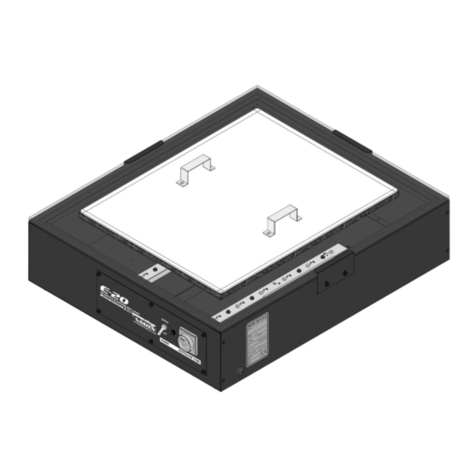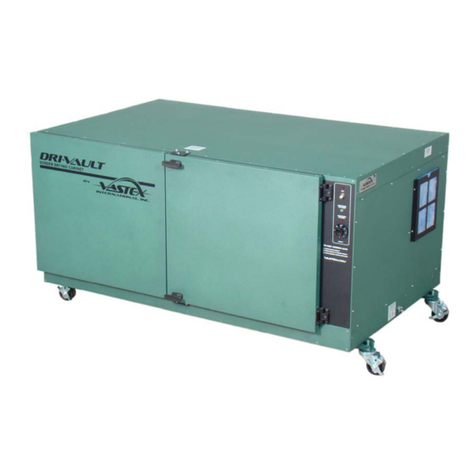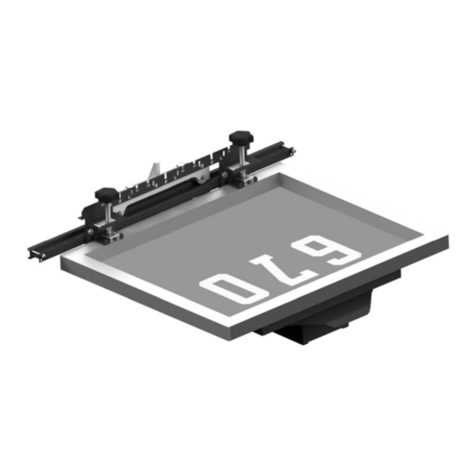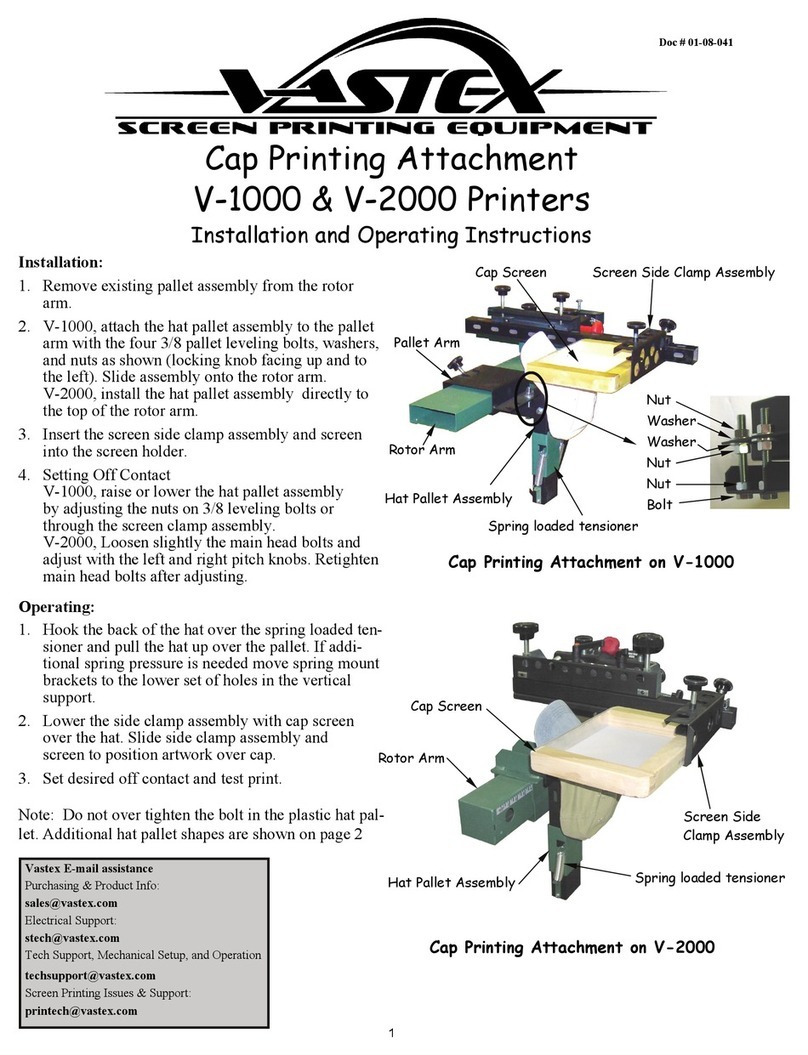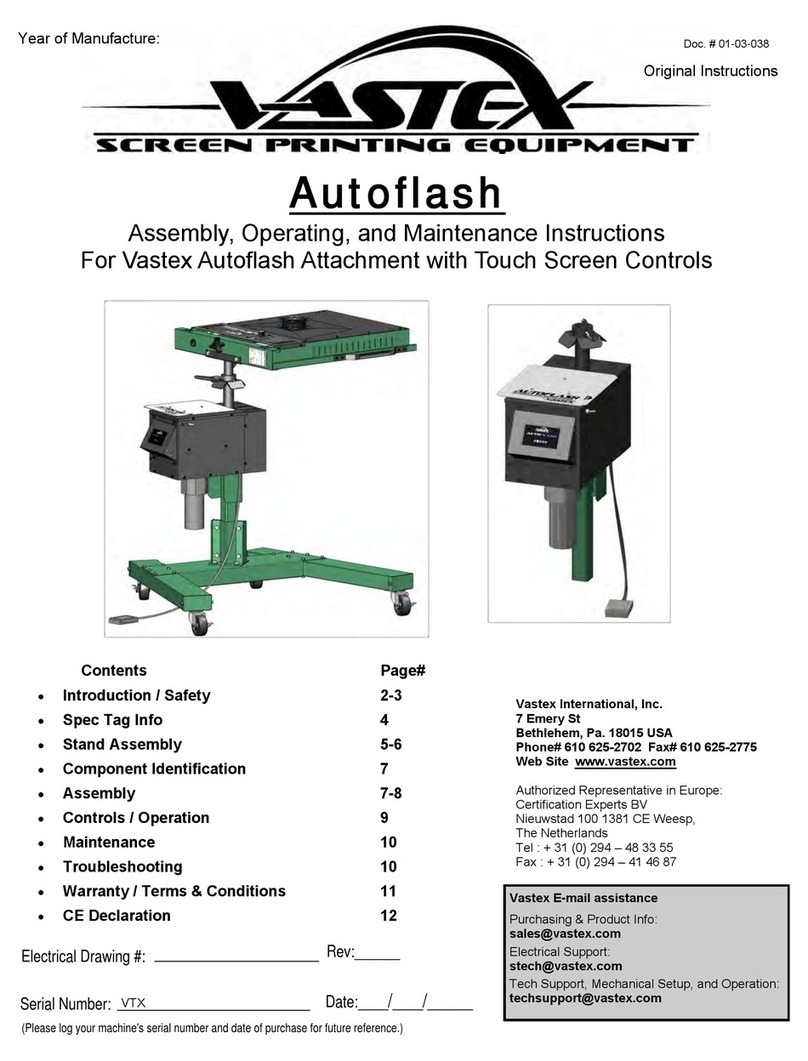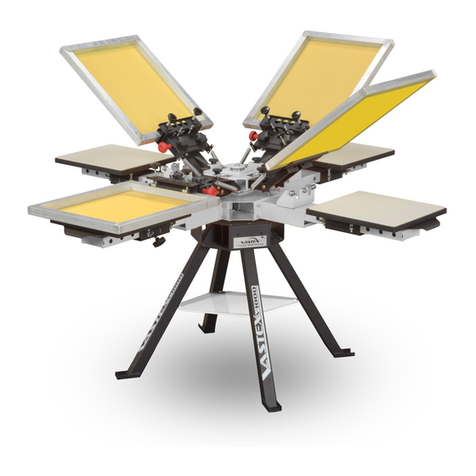
Doc. # 01-04-033A
Glass Removal / Installation
There are three glass retainers. One on each side
to square the glass to the rear seal and one in the
front with special cams. The cams are used to
gently push the glass back against the rear seal.
1) Remove the cams and front retainer. Slide
the glass towards the front to remove.
Carefully set glass on a flat, protected
surface. The cams are used to gently push
the glass back against the rear seal.
2) It is important to keep the inside of the
cabinet clean. Vacuum out any loose debris
from inside the cabinet. Refer to the replacing
a light bar if needed.
3) Reinstalling the glass.
Before installing the glass, switch the vacuum
pump on and off to verify it is functioning
properly. Clean both sides of the glass with
glass cleaner and a lint free rag. Vacuum
inside of cabinet. Position the glass seal side
down, blue tape towards the front, on the
front edge of the cabinet, and between the
side retainers. Slide glass back until it
contacts and it seated squarely against the
back seal. Place the front glass retainer and
the three cams against the glass front. Install
the screws but only snug the screws. Using a
1/4” flat screw driver in the cam slots, rotate
each cam to push the glass back. Do not
over tighten the cams but apply enough
pressure to make a seal. Now tighten the
center screws. If the vacuum leaks, go back
and tighten the cams a bit more.
4) Inspection of LED light bars should be
conducted monthly. See page 11, Step 1,
for instructions.
Inspection of UV Black bulbs should be
conducted bi-monthly. See page 12, Step 1,
for instructions
Note: The glass must be tight
against the back glass seal in
order to make a good vacuum.
Special cams help to apply
pressure. Do not over tighten.
Wear gloves when handling the
glass. Glass is tempered and
although strong, can shatter if the
edges are subjected to an impact.
Do Not allow objects to
contact the UV lights.
Maintenance
Side glass
retainer
(1 each side)
Rear glass seal
Front glass retainer,
with 3 cams.
